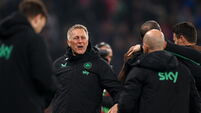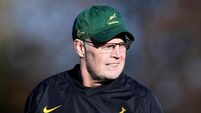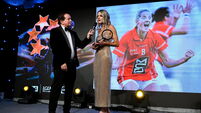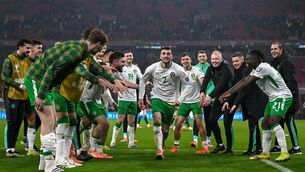Michael Moynihan: There's nothing bigger than the small details
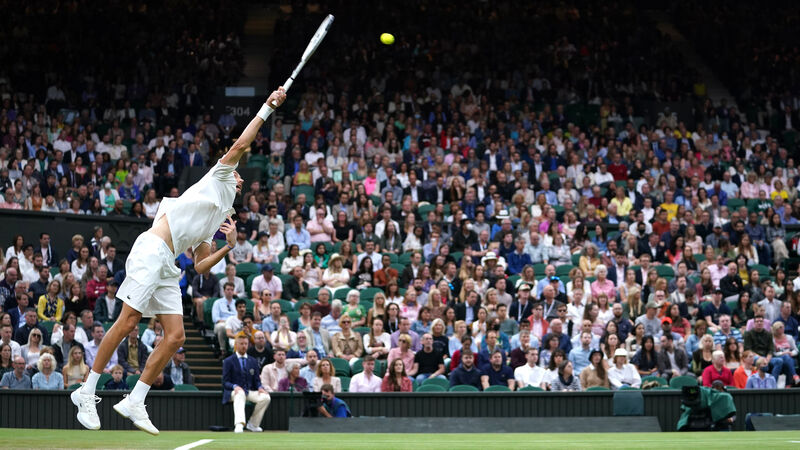
Thanks to vox.com I saw an enthralling short video in which top pro Daniil Medvedev explained his own logic when it comes to serving, writes Michael Moynihan
It’s the little things. There’s nothing bigger, is there?
(I’ll give due credit to the person who can identify the movie that line comes from.)
The reason I’m giving you such a philosophical start to the morning is Wimbledon, and something I discovered only last week.
If not this year then you’ve probably spent some time at some point watching the tennis at Wimbledon, and looking at the players getting ready to serve, checking out the balls they’re offered, knocking one back behind them before settling on the one they want for the service itself.
What I didn’t realise until this week was the thinking behind their choice.
(If your field of academic study is tennis-ball-choosing by top professionals, hold your tongue).
Thanks to vox.com I saw an enthralling short video in which top pro Daniil Medvedev explained his own logic when it comes to serving.
Medvedev doesn’t use a brand new ball for his first serve because those tend to be a little fluffier, with more of those tendrils — is it fur? — which create more drag as it flies through the air.
As players tend to be bolder on their first serve, a slightly ‘balder’ tennis ball may travel faster, therefore that’s the preferred option.
And of course a fluffier, marginally slower, ball is usually saved for the more conservative second service.
At some irrational level I felt almost cheated that it had taken me so long to find out the thinking which animated those quick checks, those snappy dismissals, because I love that kind of granular detail, that drilling down into the smallest sliver of a margin to work out an advantage.
I recall reading about the great baseball player Ted Williams complaining once after a game that the home plate in Fenway Park was a degree or two out of line and therefore he was being called out when the dimensions of the park itself were at fault.
His teammates found this hilarious, not to mention unheard of: to placate him manager Joe Cronin went out the following morning and measured the plate and Williams was right.
They should have known, of course: Williams criticised his colleagues on another occasion for leaving their bats on the ground overnight in the stadium. Why? Because the morning dew would affect the weight and balance of them.
When challenged, Williams brought the bats — all of them — to the local post office and had them weighed before a night in the damp grass of the stadium — and afterwards. And of course they were 1.5 per cent heavier the following morning.
(We have had our own experience in that realm, of course. In the 2005 Munster hurling final against Cork Eoin Kelly of Tipperary stood over a penalty and found the Leesiders had taken “the opportunity to slip in this O’Neill’s sliotar with huge rims on it . . . it wasn’t a nice ball to say the least. They’d obviously found it in a batch and kept it especially for this kind of incident. It had ‘T-I-P-P’ written across it and when I picked it up I knew straight away it was a dud sliotar.” Cork saved the penalty and pointed immediately afterwards.)
Just to double down on this search for apparently minuscule advantages — and disadvantages — I found that you can do much the same with your own body.
Also last week, even as I was being enlightened on tennis ball selection, I stumbled across an online video featuring movie critic Gene Siskel — of Siskel and Ebert fame — interrogating basketball great Michael Jordan about his hands.
“I have a wide thumb,” Jordan said, “Which gives me the grip on the ball, which lets me move the ball . . . it’s rare in this game.
“Dr J (Julius Erving) had this — if you see his hand, his thumb is so far away from his finger, it gives him a better grip and a wider span, so he can pick the ball up from the dribble and do whatever he wants with it.
“I got very long fingers. I can sense a good shot or a bad shot — if it comes off these three fingers (thumb and first two fingers) I feel good about the shot.
“If it comes off the two (little finger, ring finger) then my mechanics got screwed up somewhere.”
The difference lies between the middle finger and the ring finger? The margins don’t get any finer than that.
It’s the sportiest time of the year
This isn’t the first time I’ve asked this question, but I doubt it’s ever been more relevant.
Is this the sportiest week of the year? Of any year?
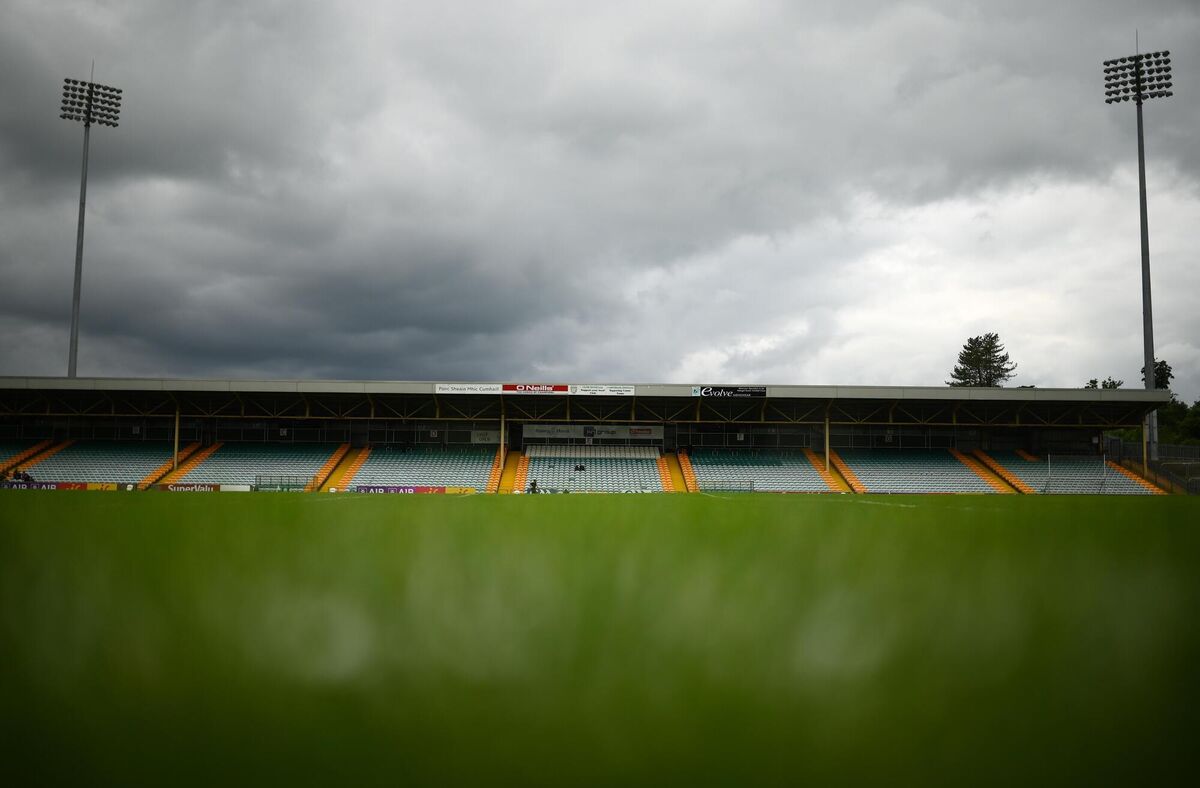
The pandemic has concertinaed so much sport together that in the last seven days there was — in no particular order — the semi-finals of the Euros and the business end of the tennis in Wimbledon, both of which came to a conclusion yesterday. Plus a Lions tour going on in South Africa in some shape or form. The GAA championships in all their infinite variety are rumbling on.
Not to mention the Tour de France trundling on. Or the Scottish Open. It’s a good thing the Olympics don’t begin until July 23, because that could have put me right over the edge.
On the other hand there was Conor McGregor, who was also in action over the weekend.
Readers shouldn’t be obliged to have any sympathy for those of us trying to create some kind of sane, coherent package out of this smorgasbord, but at a general level: wow.
When you think back just a few months ago and there was nothing going on, the amount of top-level activity that’s underway, not to mention the supporting infrastructure of non-elite and children’s sport, is staggering.
Inkling on ankles proved prescient
I mentioned Conor McGregor elsewhere on the page because he was back in action last weekend against Dustin Poirier.
I don’t follow Conor McGregor’s activities and I’m no fan of his sport, but I did notice that he apparently broke his ankle on Saturday night. I hate to say I told you so, but your columnist was warning all and sundry last Monday that the ankle was having a moment.
And what happened barely a week afterwards?
For next week’s lottery numbers contact the email address below.
Smokin’ Joe Frazier: a gripping biography
There isn’t a shortage of books on Muhammad Ali, and good books at that, but my eye was drawn to a different boxer’s face in Douglas Library last week.
Smokin’ Joe: The Life of Joe Frazier by Mark Kram Jr is a couple of years old but clearly had slipped my notice, because I would have immediately snapped it up if it had come to my notice.
Frazier had those immortal bouts with Ali in the 1970s, including the Thrilla in Manila in 1975, and lived a life full of incident if the first three chapters are anything to go by.
There’s an intriguing twist in that the author is the son of Mark Kram, who covered those Ali-Frazier fights in the ’70s, but this book stands strong on its own feet. Not unlike its subject.
Contact: michael.moynihan@examiner.ie

Unlimited access. Half the price.
Try unlimited access from only €1.50 a week
Already a subscriber? Sign in

